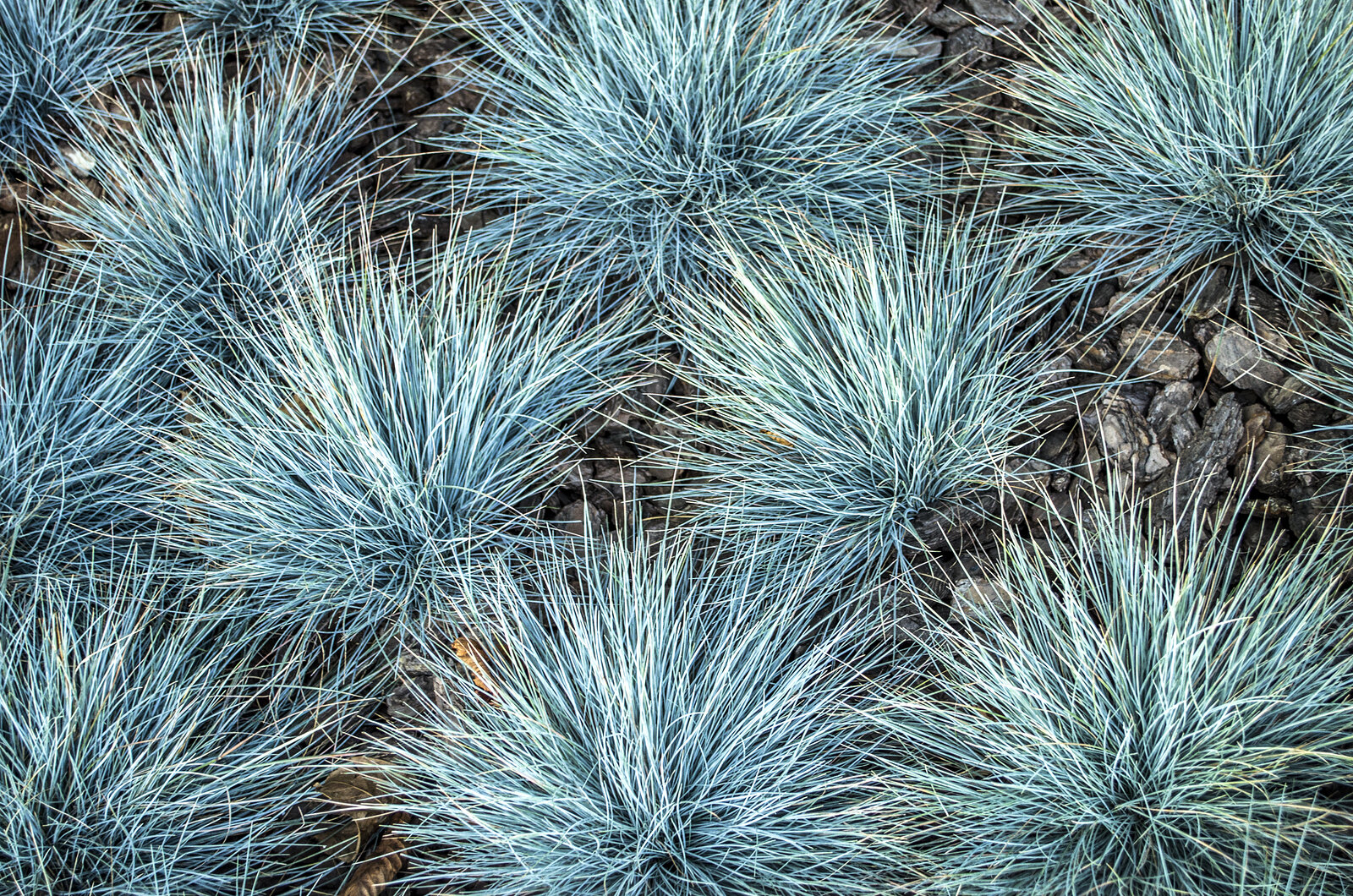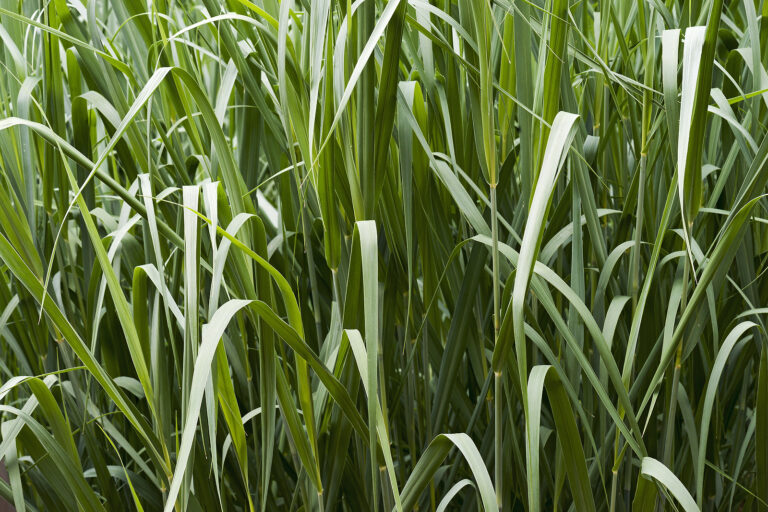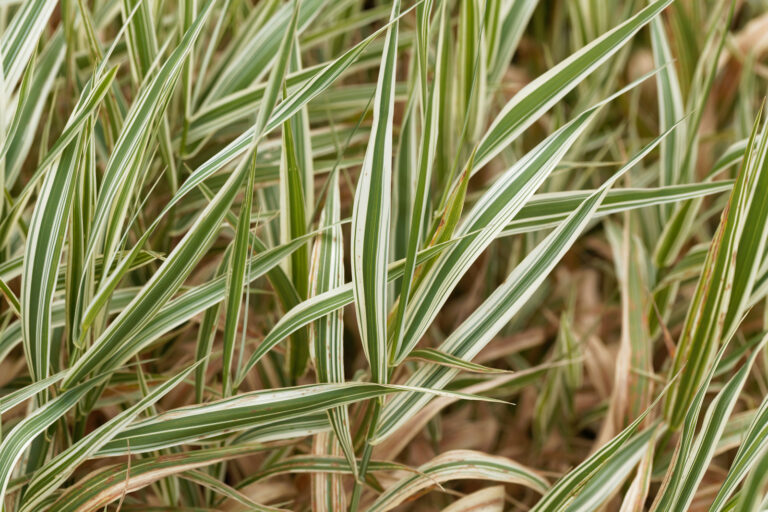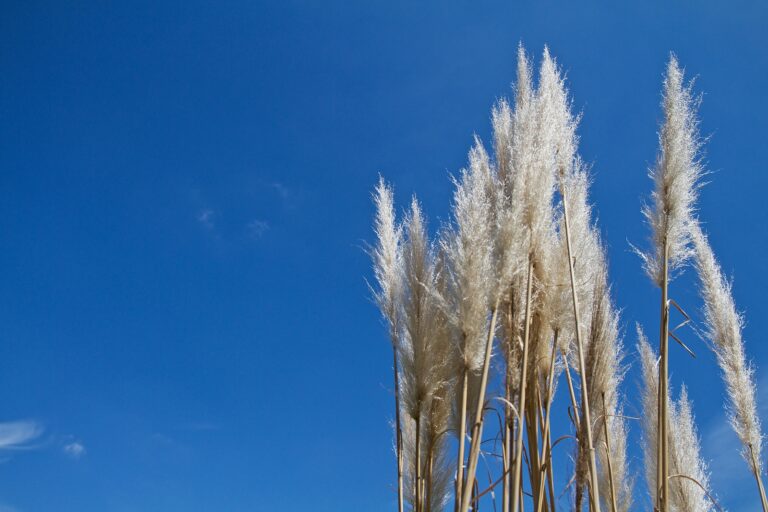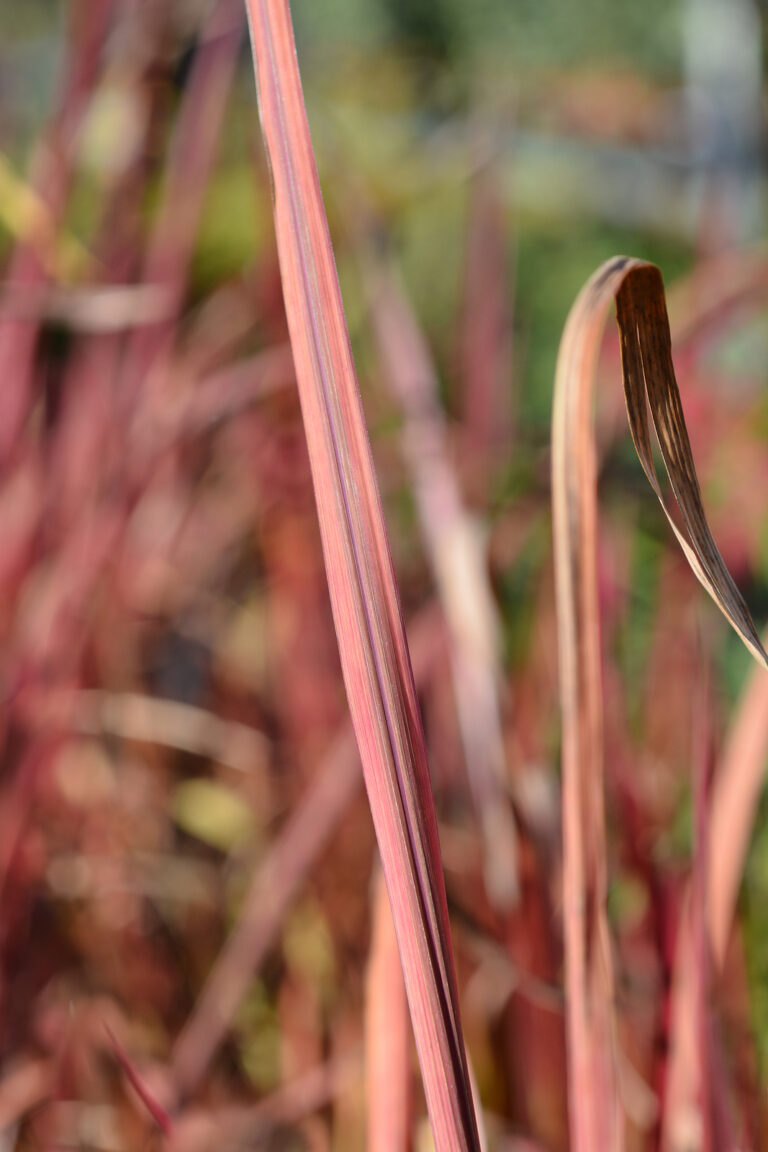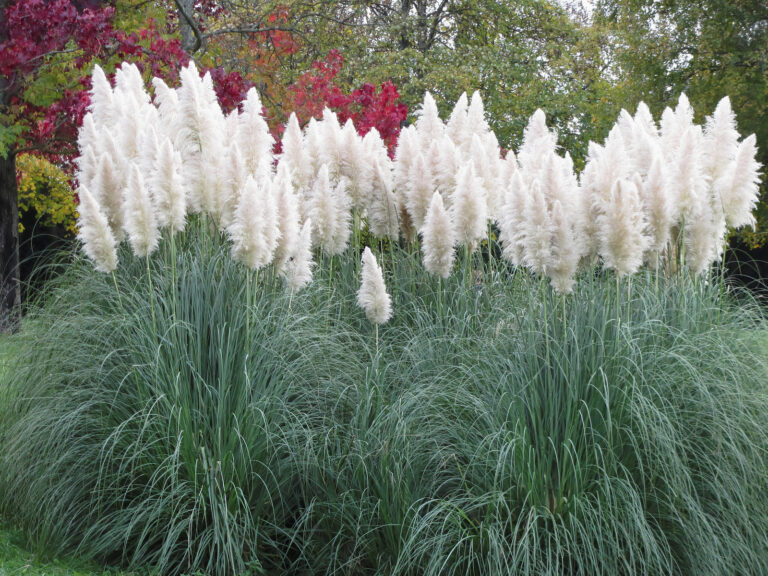How to Grow Fescue – Festuca
Festuca — often called fescue–is a large genus of deciduous or evergreen, rhizomatous, and often tufted perennial grasses. Many are turf or pasture grasses. A few are ornamental species grown for strappy, grasslike foliage and sometimes flowers.
Fescues are usually blue-green or blue-gray. The lance-shaped leaves are flat, folded, or rolled. Inflorescences are dense or loosely branched panicles of glaucous or brown-green flowers that appear in spring or summer. Lawn fescues are classified as fine or coarse.
Festuca species commonly seen in gardens are dense mounds of linear, gray-green, silvery-blue, and occasionally black leaves. Ornamental garden species can be grown singly or in groups in a border or rock garden.
The genus Festuca contains 300 to 400 species. They are widely distributed in grassland, woodland edges, and stream margins throughout temperate zones.

Get to know Festuca
- Plant type: Deciduous or evergreen perennial
- Growing zones and range: Zones 4 to 8
- Hardiness: Hardy to Zone 4
- Height and width: 6-10 inches x 6-10 inches (15.2-25.4cm x 15.2-25.4cm)
- Growth rate: Moderate to fast
- Form and habit: Clumping grass grown in dense mounds
- Foliage: Coarse, dense, linear gray-green or silvery blue leaves
- Uses: Cool-season lawns or gardens, erosion control, pasture, or as an ornamental
- Garden companions: Hardy geraniums or threadleaf coreopsis
- Common name: Fescue
- Botanical name: Festuca
- Family name: Poaceae (Gramineae)
- Origin: Widely distributed in grasslands and woodlands in temperate zones.
Where to plant Festuca
- Plant Festuca in full or partial shade, except as noted.
- Plant Festuca in moist, well-drained soil; good drainage is crucial.
- Festuca do not grow well where summers are hot and humid, but a site with afternoon shade helps them cope.
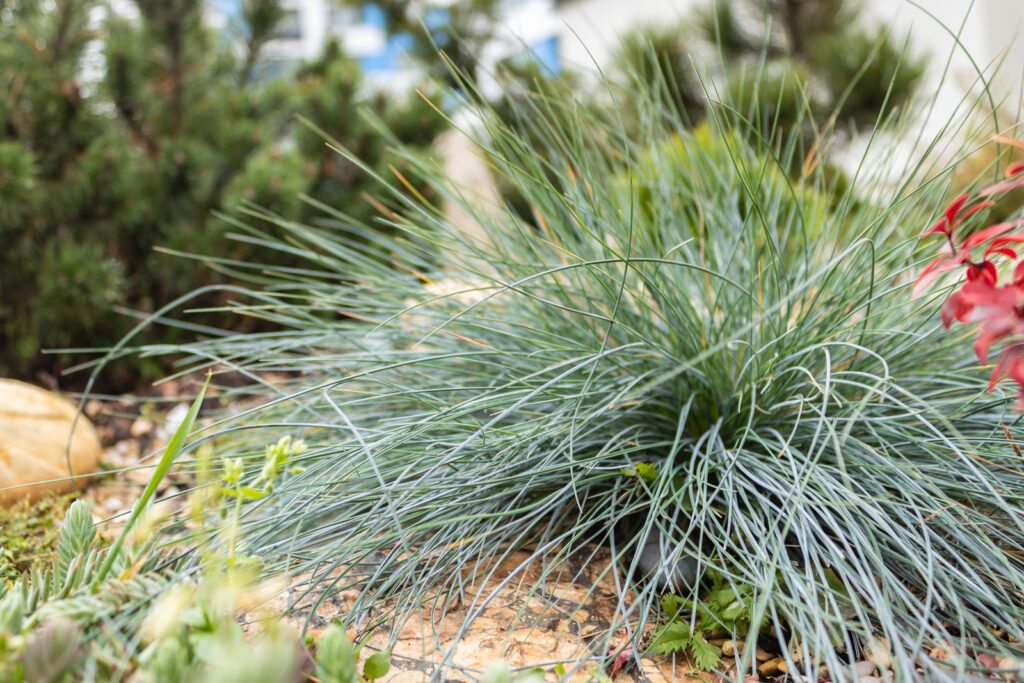
When to plant Festuca
- Set container-grown Festuca in the garden in spring or autumn.
- Divide plants in spring.
- Sow seed in a cold frame in spring.
Planting and spacing Festuca
- Plant Festuca 8 inches (20.3cm) apart.
How to water and feed Festuca
- Give Festuca regular water, tolerate some aridity.
- Feed Festuca with an all-purpose organic fertilizer in spring
How to care for Festuca
- Cut Festuca back to a height of 3-4 inches (7.6-10.2cm) annually in early spring or fall to keep them neat looking.
- Many gardeners clip off the seed heads with they appear in order to focus attention on the foliage.
- Remove Festuca flowers to prolong the plant’s life.
Festuca pests and diseases
- Powdery mildew, rust, smut, brown patch, leaf spot, and anthracnose can attack Festuca.
Festuca propagation
- Propagate Festuca by division.
- Divide Festuca clumps every 3 years or so to keep them vigorous.
- Festuca self-sow and can be grown from seeds, but cultivars do not come true and should be propagated by division.

Festuca varieties to grow
- Festuca elatior, Tall fescue, coarse. Tall-growing—to 2.5 feet (.8m)—pasture grass also used for erosion control when unmowed; or for moderately low-water-use lawns if planted close together and mowed to 2-3 inches (5.1-7.6cm) high. Tough blades, tolerance of compacted soils make it good play or sports turf. Finer-textured strains are used as lawn grasses, either alone or mixed with bluegrass.
- F. glauca, Blue fescue, formerly F. cinera and F. ovina ‘Glauca’. Clump-forming 6-12 inches (15.2-30.5cm) tall cool-season grass forming evergreen mounds of blue- or silver-green leaves. ‘Elijah Blue’ offers pale blue leaves on 1 foot (.3m) tall plants. ‘Sea Urchin’ (‘Seeigel’) forms tight 6 inch (15.2cm) tall mounds of silver-blue leaves. Zones 4 to 9.
- F. ovina, Sheep fescue, fine. Low-growing grass—to 1 foot (.3m)—with narrow, needle-fine, soft but tough leaves. F. o. duriuscula, hard fescue, is sometimes used as lawn grass. ‘Glauca’, blue fescue, forms blue-gray tufts 4-10 inches (10.2-25.4cm) tall. Useful ground cover for sunny or partially shaded areas, on slopes or level ground. Cannot tolerate foot traffic. Clip back near to the ground after flowering or any time plants look shabby. Does not make solid cover and needs frequent weeding. Dig overgrown clumps, pull apart, and replant as small divisions. Set 6-15 inches (15.2-38.1cm) apart, depending on desired effect.
- F. rubra, Red fescue, fine. Principal use is in blends with bluegrass or other lawn grasses. Also used to overseed Bermuda-grass lawns in winter. Blades narrow, dark green. Not fussy about soil; takes some shade. Used alone, tends to grow clumpy; mow to 1.5-2.5 inches (3.8-6.4cm) high. The type most commonly sold is sometimes called creeping red fescue; it is one of the most shade tolerant of good lawn grasses. Unmowed, all types of red fescue make attractive meadow on slopes too steep to mow.

